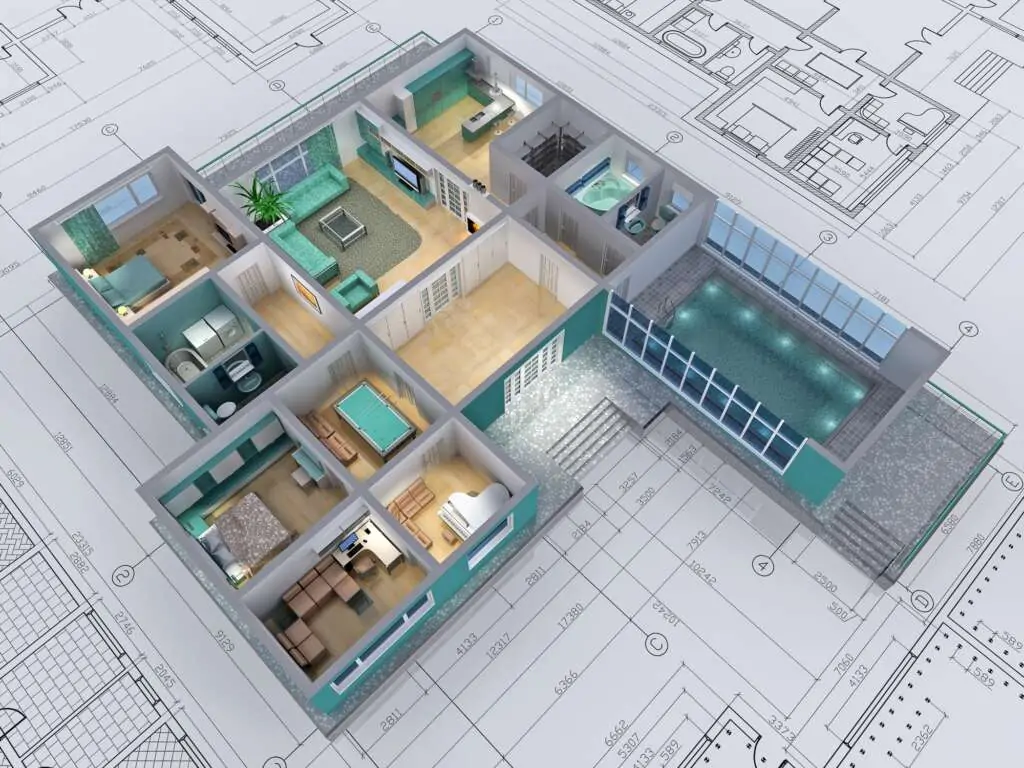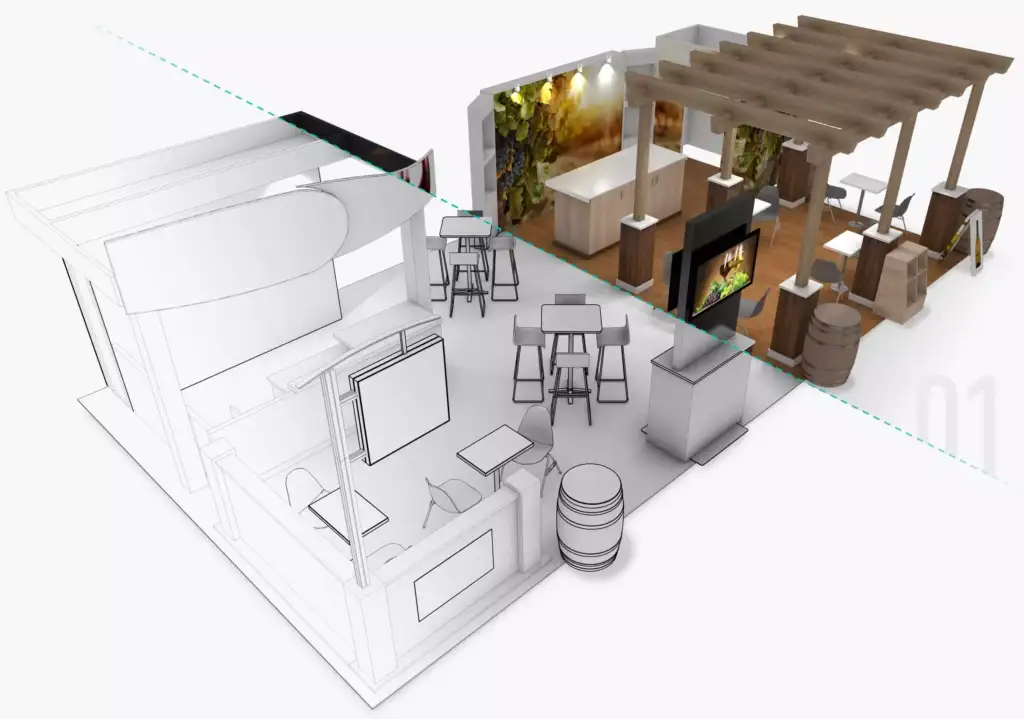The Transformative Role of 3D Rendering in Visual Arts
Exploring the transformative role of 3D rendering in visual arts, this article emphasizes the principles of flexibility, innovation, and adaptability in the creative process. From navigating the complexities of modern visual landscapes to embracing technological advancements, flexible 3D rendering collaborations redefine cost-effectiveness and serve as catalysts for innovation. Positioned as a strategic advantage, these collaborations future-proof creativity by enabling artists and businesses to adapt to emerging trends and stay ahead in the dynamic realm of visual arts.
The 3D modeling and rendering Landscape:
Much like the careful evaluation of fonts in typography or the thoughtful consideration of colors in color psychology, 3D modeling, and rendering involves a meticulous approach to creating lifelike digital environments. Speed, scale, reliability, and flexibility remain crucial, ensuring a seamless and impactful visual identity. Hybrid models that integrate internal teams with external 3D modeling and rendering services are recognized for optimal results.
The Essence of 3D modeling and rendering Flexibility:
In the ever-evolving landscape of creative expression, the concept of 3D modeling and rendering flexibility emerges as a guiding principle. Departing from traditional 2D methods, this paradigm shift embraces adaptability and responsiveness, aligning with the evolving needs of artists and businesses seeking dynamic and engaging visual solutions.
Understanding the 3D Rendering Landscape:
Before delving into the intricacies of flexible 3D modeling and rendering, it’s crucial to comprehend the dynamics of the contemporary creative landscape. Escalating demands for immersive experiences in gaming, movies, architecture, and product design render conventional visual methods less effective. The need for a dynamic, responsive, and collaborative 3D modeling and rendering approach becomes increasingly evident.
Navigating 3D modeling and rendering Complexity:
A standout feature of flexible 3D modeling and rendering is its ability to navigate the complexities of the modern creative landscape with ease. As industries embrace the shift to three-dimensional representations, the demand for realistic and detailed 3D assets surges. From architectural visualizations to product prototypes, flexible 3D modeling and rendering ensures the prompt and efficient fulfillment of a spectrum of creative needs.
Breaking Free from 3D modeling and rendering Constraints:
Similar to the liberation from constraints emphasized in previous articles, flexible 3D modeling and rendering break free from traditional limitations. Engineered to accommodate changes, embrace evolving visual scopes, and foster a collaborative process refining creative output iteratively, this model offers unparalleled 3D modeling and rendering flexibility.
Creativity’s heartbeat is in its constant evolution. so does 3D visual rendering pulse—a transformative partner for artists and businesses, ensuring their visual narratives evolve dynamically with the ever-changing demands of the creative landscape.”Thames Ben

Collaborative Synergy in 3D Visual Rendering:
Flexibility in 3D visual rendering thrives on collaborative synergy. In a flexible design partnership, artists and creative teams engage in an ongoing dialogue. This collaborative approach ensures that 3D visual rendering output aligns seamlessly with the artist’s vision. Regular check-ins, open communication channels, and a shared understanding of project goals form the cornerstones of this collaborative synergy.
Adapting 3D Visual Rendering to Project Dynamics:
Recognizing that not all creative projects are created equal, flexible 3D visual rendering adapts to various project dynamics. Whether it’s a quick visual representation requiring rapid turnaround or a comprehensive 3D world demanding in-depth ideation and execution, the 3D visual rendering partnership model accommodates diverse project timelines without compromising on quality.
Redefining Cost-Effective 3D Visual Rendering:
Flexibility in 3D visual rendering does not come at the cost of financial imprudence; in fact, it redefines cost-effectiveness. Unlike traditional models operating on fixed pricing structures, a workable partnership introduces a nuanced approach. Clients pay for the 3D visual rendering services they need, ensuring that every dollar spent maximizes its impact.
Embracing Technological Advancements in 3D visual Rendering:
In an era dominated by technological advancements, flexible 3D modeling and rendering seamlessly integrates these innovations into the creative process. From real-time rendering for interactive experiences to advancements in virtual reality and artificial intelligence, this partnership model embraces cutting-edge 3D modeling and rendering technologies.
Future-Proofing Creativity through 3D modeling and rendering:
As industries confront an ever-evolving landscape, the ability to future-proof creativity through flexible 3D modeling and rendering becomes paramount. This workable partnership inherently embodies future-proofing, enabling artists and businesses to adapt to emerging trends, incorporate new design methodologies, and stay ahead of the curve.
“In the dynamic realm of creativity, adaptability is not just a virtue; it’s a necessity. Flexible 3D rendering partnerships exemplify this necessity, offering artists and businesses the agility to thrive in an ever-changing visual landscape.” –
Ben Jack
It’s imperative to underscore the innate capacity of flexible 3D modeling and rendering to embrace change. Unlike traditional models that might resist deviations from the initial plan, flexibility is ingrained in the DNA of these partnerships. This adaptability not only allows for smoother 3D modeling and rendering navigation but also positions artists and businesses to readily embrace the inevitable shifts in creative requirements.
Adaptability as a Competitive Edge in 3D modeling and rendering:
The creative landscape is not static, and those who can swiftly adapt gain a competitive edge. Flexible 3D modeling and rendering collaborations go beyond meeting immediate creative needs; they serve as strategic instruments for artists and businesses to stay ahead. By fostering an environment where creativity and 3D modeling and rendering adaptability coexist, these partnerships empower organizations to respond effectively to market dynamics and emerging visual trends.

Cost-Effectiveness as a Strategic Advantage in 3D modeling and rendering:
A critical facet of flexible 3D modeling and rendering collaborations is their redefinition of cost-effectiveness. In a world where every expenditure is scrutinized, this model allows artists and businesses to allocate resources judiciously. By paying for services as needed, organizations can optimize their creative investments, ensuring that financial prudence aligns harmoniously with artistic pursuits.
Catalyst for Innovation through 3D modeling and rendering:
Collaboration lies at the heart of flexible 3D modeling and rendering partnerships, and it catalyzes innovation. The synergy between artists and 3D modeling and rendering teams creates a dynamic feedback loop. This iterative process not only refines 3D modeling and rendering output but also becomes a breeding ground for innovative ideas. It’s within this collaborative framework that true 3D modeling and rendering breakthroughs often occur.
Creativity with Flexible 3D modeling and rendering:
It’s essential to recognize that changeable 3D modeling and rendering collaborations contribute to the strategic imperative of future-proofing creativity. In an era where visual trends evolve rapidly, being able to pivot without compromising creative integrity is invaluable. This model positions artists and businesses not just to meet current 3D modeling and rendering challenges but to anticipate and navigate the visual landscape of the future.
3D modeling and rendering is not just a technological tool; it’s a strategic decision that transforms the way artists and businesses engage with visual arts. By embracing adaptability, fostering collaboration, and staying ahead of technological advancements, creative endeavors can leverage 3D modeling and rendering as a powerful tool in creating a lasting and impactful presence in the art world.


